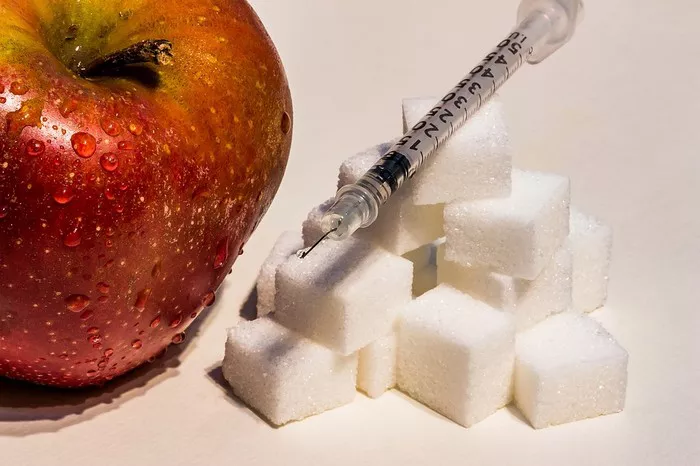Managing diabetes often involves making careful dietary choices to maintain optimal blood sugar levels. Among these choices, incorporating nuts into a diabetic diet can be highly beneficial due to their nutrient-rich profiles and potential to aid in blood glucose control. This article explores the types of nuts that are suitable for diabetics, their health benefits, and practical tips for including them in a balanced diet.
Understanding Diabetes and Diet
Diabetes is a chronic condition characterized by high levels of glucose in the blood, either due to insufficient insulin production (Type 1 diabetes) or insulin resistance (Type 2 diabetes). Managing diabetes typically involves a combination of medication, physical activity, and dietary modifications.
A diabetic-friendly diet focuses on controlling blood sugar levels, maintaining a healthy weight, and reducing the risk of heart disease. Foods with a low glycemic index (GI) that release glucose slowly into the bloodstream are preferred. Nuts, with their low GI and rich nutrient content, can play a valuable role in such a diet.
The Nutritional Powerhouse of Nuts
Nuts are nutrient-dense foods that provide a variety of vitamins, minerals, healthy fats, fiber, and protein. Here’s an overview of the general nutritional benefits of nuts:
Healthy Fats: Nuts are high in monounsaturated and polyunsaturated fats, which are beneficial for heart health and can help improve cholesterol levels.
Fiber: The fiber content in nuts aids in digestion and helps regulate blood sugar levels by slowing the absorption of glucose.
Protein: Nuts are a good source of plant-based protein, which is essential for muscle repair and maintenance.
Micronutrients: Nuts contain important vitamins and minerals such as vitamin E, magnesium, potassium, and calcium.
Antioxidants: Nuts are rich in antioxidants, which help protect cells from damage and reduce inflammation.
Nuts Suitable for Diabetics
Different types of nuts offer unique health benefits. Here’s a detailed look at some of the best nuts for diabetics:
1. Almonds
Almonds are one of the most popular nuts and are particularly beneficial for diabetics due to their high content of healthy fats, fiber, and protein.
- Nutritional Highlights: Almonds are rich in vitamin E, magnesium, and manganese. They also contain a significant amount of fiber, which helps in maintaining stable blood sugar levels.
- Glycemic Index: Almonds have a very low glycemic index, which means they have minimal impact on blood glucose levels.
- Health Benefits: Regular consumption of almonds has been shown to improve insulin sensitivity and reduce fasting blood sugar levels. Additionally, almonds can help lower LDL cholesterol and reduce the risk of cardiovascular disease.
Practical Tips: Almonds can be eaten raw, roasted, or as almond butter. They can be added to salads, oatmeal, yogurt, or smoothies for an extra nutritional boost.
2. Walnuts
Walnuts are known for their high content of omega-3 fatty acids, which are essential for heart health.
- Nutritional Highlights: Walnuts are an excellent source of alpha-linolenic acid (ALA), a type of omega-3 fatty acid. They also contain significant amounts of copper, manganese, and biotin.
- Glycemic Index: Like most nuts, walnuts have a low glycemic index.
- Health Benefits: The omega-3 fatty acids in walnuts help reduce inflammation, improve heart health, and potentially enhance brain function. Studies have shown that walnuts can improve blood vessel function and reduce the risk of cardiovascular disease, which is crucial for diabetics.
Practical Tips: Walnuts can be enjoyed as a snack, added to baked goods, or used as a topping for cereals and salads. They also pair well with fruits and cheese.
3. Pecans
Pecans are a delicious and nutritious option, known for their buttery flavor and health benefits.
- Nutritional Highlights: Pecans are rich in monounsaturated fats, fiber, thiamine, and zinc. They also contain important antioxidants like vitamin E.
- Glycemic Index: Pecans have a very low glycemic index.
- Health Benefits: Pecans can help lower LDL cholesterol and improve overall cholesterol profiles. Their high antioxidant content helps combat oxidative stress, which is beneficial for diabetics.
Practical Tips: Pecans can be used in both sweet and savory dishes. They are great in pies, salads, and as a topping for oatmeal or yogurt.
4. Pistachios
Pistachios are not only tasty but also packed with nutrients beneficial for diabetics.
- Nutritional Highlights: Pistachios are rich in protein, fiber, and healthy fats. They are also a good source of vitamin B6, copper, and manganese.
- Glycemic Index: Pistachios have a low glycemic index.
- Health Benefits: Studies have shown that pistachios can help lower blood sugar levels and improve cardiovascular health. They are also known to reduce inflammation and improve gut health.
Practical Tips: Pistachios can be eaten on their own, added to trail mixes, or used as a crust for fish and poultry. They also make a great addition to salads and desserts.
5. Cashews
Cashews have a creamy texture and are versatile in various culinary applications.
- Nutritional Highlights: Cashews are rich in healthy fats, protein, magnesium, and zinc. They also contain a fair amount of copper and iron.
- Glycemic Index: Cashews have a low glycemic index, making them a suitable option for diabetics.
- Health Benefits: Cashews can help improve blood lipid profiles and reduce blood pressure. They also support bone health and boost the immune system due to their high magnesium and zinc content.
Practical Tips: Cashews can be used in both savory and sweet dishes. They are great in stir-fries, curries, and as a base for dairy-free cheeses and sauces.
6. Macadamia Nuts
Macadamia nuts are known for their rich, buttery flavor and high-fat content.
- Nutritional Highlights: Macadamia nuts are high in monounsaturated fats, which are beneficial for heart health. They also contain significant amounts of thiamine and manganese.
- Glycemic Index: Macadamia nuts have a very low glycemic index.
- Health Benefits: The healthy fats in macadamia nuts can help improve cholesterol levels and reduce the risk of heart disease. They also have anti-inflammatory properties, which can be beneficial for diabetics.
Practical Tips: Macadamia nuts can be enjoyed as a snack, added to baked goods, or used in savory dishes like salads and seafood.
Incorporating Nuts into a Diabetic Diet
When adding nuts to a diabetic diet, portion control is essential due to their high-calorie content. Here are some tips for incorporating nuts into your daily meals:
Snacking: Nuts make a convenient and healthy snack option. A small handful (about 1 ounce or 28 grams) can provide a satisfying and nutritious boost.
Breakfast: Add chopped nuts to your morning oatmeal, yogurt, or smoothie for added crunch and nutrition.
Salads: Sprinkle nuts over salads to enhance texture and flavor while adding healthy fats and protein.
Cooking: Use nuts as a crust for meat or fish, or incorporate them into stir-fries and grain dishes.
Baking: Include nuts in baked goods like muffins, bread, and cookies for added nutrition.
Potential Allergies and Considerations
While nuts offer numerous health benefits, it’s important to be aware of potential allergies. Nut allergies can cause severe reactions in some individuals, so it’s essential to ensure that you do not have a nut allergy before incorporating them into your diet.
Additionally, it’s important to choose unsalted and unflavored nuts to avoid excess sodium and added sugars. Opt for raw or dry-roasted nuts over oil-roasted varieties to keep calorie and fat intake in check.
See also:What Is The Best Fruit Juice For Diabetics
Conclusion
Nuts are a valuable addition to a diabetic diet, providing essential nutrients, healthy fats, and fiber that can help manage blood sugar levels and support overall health. By choosing a variety of nuts and incorporating them into your meals and snacks, you can enjoy their health benefits while maintaining good glycemic control. As with any dietary changes, it’s important to consult with a healthcare professional or registered dietitian to ensure that your diet meets your individual nutritional needs and health goals.
Related topics:
What Can Diabetics Eat Instead of Bread?


























